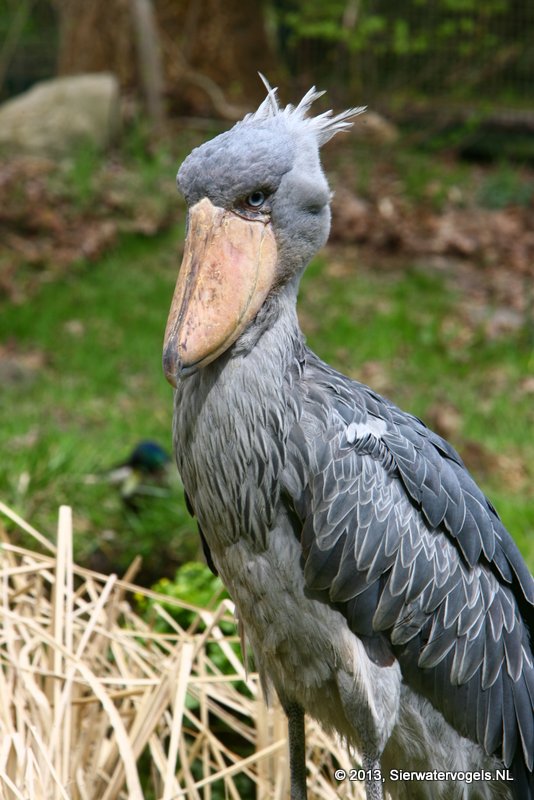
Shoebill stork (Balaeniceps rex)
The Shoebill stork
(Balaeniceps rex) is a from the family of stork (Balaenicipitidae).
Species name
- Dutch name:
- Schoenbekooievaar
- English name:
- Shoebill stork
- German name:
- Schuhschnabel
- French name:
- Bec-en-sabot du Nil
- Scientific name:
- Balaeniceps rex
Scientific classification
- Order:
- Pelecaniformes
- Family:
- Balaenicipitidae
- Genus:
- Balaeniceps
Description
- Description:
Male and Female
The plumage of adult birds is blue-grey with darker slaty-grey flight feathers. The breast presents some elongated feathers, which have dark shafts.Juvenile
The juvenile has a similar plumage colour, but is a darker grey with a brown tinge. When they are first born, shoebills have a more modestly-sized bill, which is initially silvery-grey. The bill becomes more noticeably large when the chicks are 23 days old and becomes well developed by 43 days.
Standard Measurements
- Body Length (cm):
- The male (drake) of the Shoebill stork measures approximately 110-140 centimeters. The female measures approximately 110-140 centimeters.
- Body Weight (grams):
- The male will weight about 5600 gram. The female will weight about 4900 gram.
The weight is notoriously variable and can only be used as indication!
- Note:
The chick takes three to fours years to reach reproductive maturity.
In captivity, the shoebill has lived as long as thirty-six years and even up to fifty years according to one report. Its lifespan in the wild is unknown.
- Breeding:
- The female Shoebill stork usually lays from 1-3 bluish-white at first, but soon become flecked with brown eggs and incubates them for 29-31 days.
- Recommended closed leg band ring size for the Shoebill stork is mm.The leg band ring can only be applied on a young at around days old.
- It doesn't matter what leg that you band, but it's good to have a consistent system. Suggested: Left leg = Female, Right leg = Male
- Regulation:
- No information about regulation available

